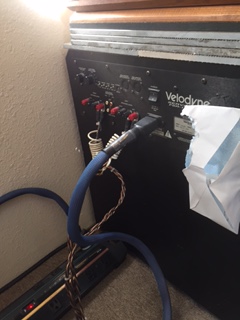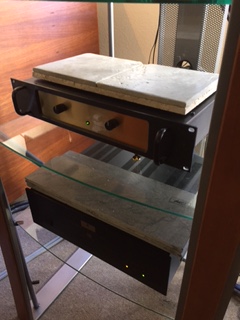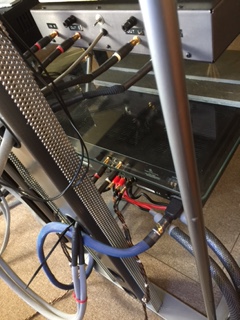Larger wire is unnecessary. I don't see the value in silver, there just isn't a requirement for anything special to achieve the best possible results for this specific job. Do as Gary said, twist it, or get twisted wire.
The twisted pair may work here. http://www.partsconnexion.com/wire_hookup_kimber_twst.html (varistrnad) or twisted 20ga here http://www.partsconnexion.com/wire_hookup_dhlabs.html
I would have to agree with that, from audio connections wisdom. But I am not an expert when it comes to cables, sizes, better audio signal transmission, geometry, best speaker/subwoofer wires, impedance, sync between main speakers and subs, etc.
From what I understand, and also did in the past, using this type of speaker connection; I used small gauge speaker wires from the amplifier's speaker binding posts to the subwoofer's own speaker's binding posts.
But as others have said, if you can use preamp outs they're a much better choice. But also if there's no preamp outs, I prefer to use signal level input with resistors on the cable from amplifier output; sounds a lot cleaner usually.
That would be best of course if the preamp has that facility.
_______
Question: In today's ultra high end stereo hi-fi sound systems, why not all high end preamps don't have the accommodation to add a subwoofer or two, from the line level?
If sound quality is priority in the passion of music listening among hi-end calibrated audiophiles, this seems like a very reasonable option to me.
But! Audio signal integrity in its all virgin purity must dictate the shortest audio signal path with the less detour possible. ...No complex connection, no added up to the audio transmission signal, no nothing that can interfere or add noise.
That's probably why we hardly see added subwoofers in the ultra hi-end audio community; the loudspeakers are already full range, clean 20Hz or even lower, with large drivers or integrated subwoofer columns with their own integrated amplification. ...The top guns.
But even other top guns have no subs, no integrated amplification, no active crossovers, no EQ, no DSP, no nothing in their full range loudspeakers; I can name many many hi-end speaker's companies. And DSP Room EQ is a big No No from some hi-end audio manufacturers (here too I can name few, a fair bunch); they are rather advocating acoustic room treatments to achieve the perfect natural pure sound quality/integrity to the signal source.
_______
Bonus:
But yes, using speaker wires @ the speaker's level when adding a subwoofer or two; I didn't yet see advice in using large gauge "king cobra snake" wires for this application.
But! If the demand is there, and people are starting to use more and more that type of wiring connection; there are many hi-end audio cable companies out there ready to deliver superior cables with superior sound quality from better construction, copper purity (9N), pure solid silver and gold and titanium, better cable dressing, dielectric, best geometry, solid fidelity, battery activated networks, optical light speed proprietary characteristic, integrated equalization for the the low frequencies (from 5Hz to 100Hz), all the things that look and sound definitely superior, with all the necessary and essential features. ...And with a price to match, of course. But money is irrelevant, only the sound counts, and only the best sound. - Slight humorous touch here mixed with science; it feels like Saturday today.









